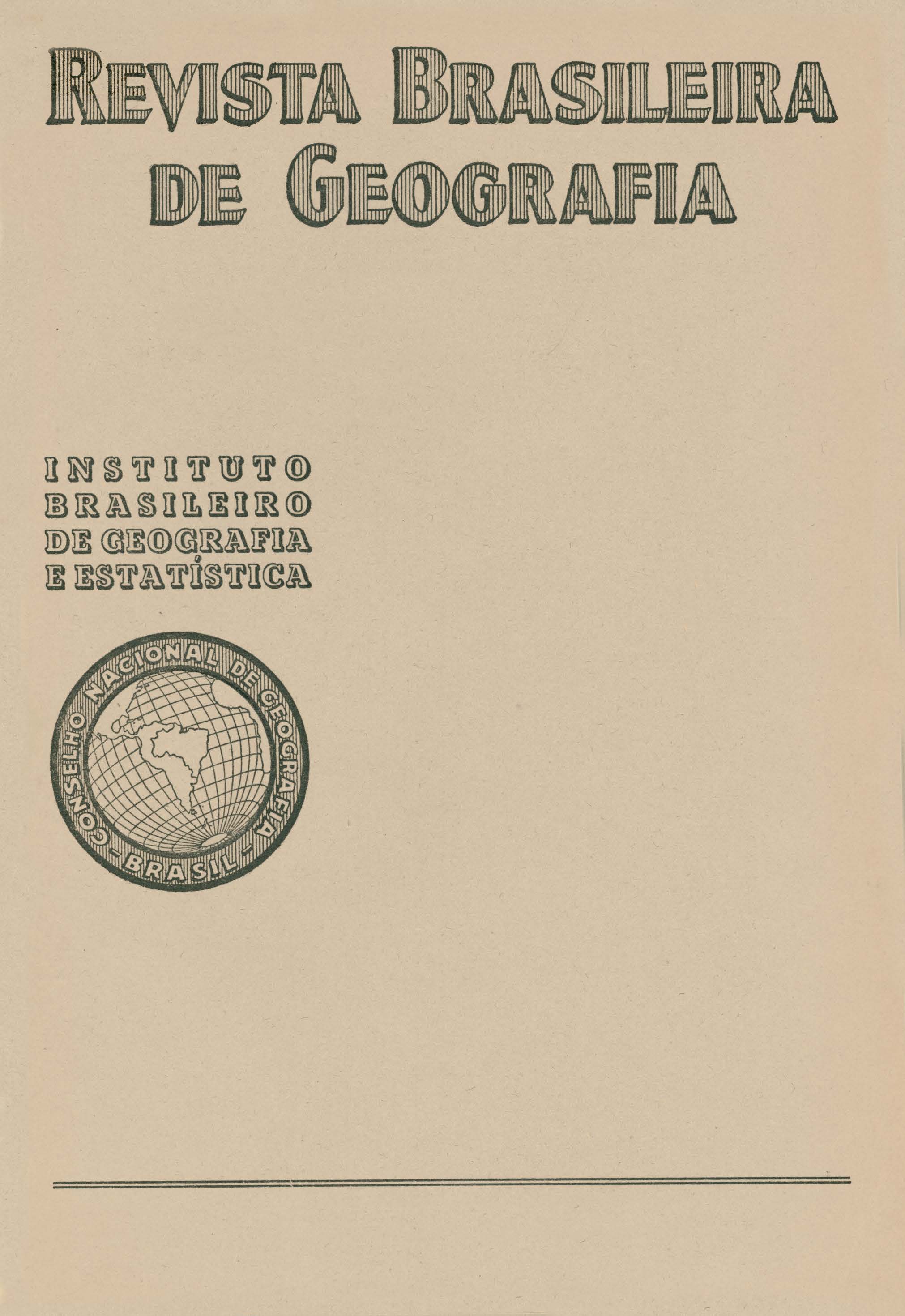As Zonas de fauna da América Tropical
Palavras-chave:
América Central;, América do Sul;, Zoogeografia.Resumo
The author, Prof. Cândido de Mello Leitão, Technical Consultant of the National Council of Geography, after giving the definitions and divisions by Wallace, Sclater, Heilprin, Dahl and Bodenheimer of the zones of the fauna of the Globe, goes on to deal with the American Continent. He compares the divisions by Lydekker and Wallace, in order to show the principle disagreement, especially with reference to the Sonorana. Then he studied the biotic American zones by Merriam (for Central and North America) and the biogeographic treatic by Tate, Mello Leitão and Cabrera & Yepes (for South America).
The author reminds us that a straight relation exists between the vegetation and the fauna and that, therefore, the distribution, above all of the herbivorous animals, depends on the distribution of the alimentary plants and that its biogeographic area is always smaller than that of the nutritious plant. He gives four original zoogeographic rules:
I - The rhizophagan or phyllophagan (animals that feed on roots and leaves) comprise a much greater geographic area than the carpophangan or spermophile (that feed on fruit and seeds).
II - Within the same zoological group, under similar conditions of deportment and feeding, the animals of the fields comprise a much greater biogeographic area than the nemorous (that live on the open country).
III - Taken into consideration the various layers or of the forest, mainly the two middle strata are the ones o f most zoogeographic importance.
IV - Within a continual continental area the carnivorous animals present a more notable expansion than the" herbivorous.
He tries to give a precise definition of the terms commonly used in Biogeography - Kingdom, Region, Province, District and Habitation. The following is his definition: Kingdom is a large area, continual or discontinual, characterized by· a great number of positive peculiarities of the fauna, which distinguish it from other homologous areas and which, in general, can be defined in a concise way.
Region is the part of the Kingdom, limited by its climatic character more restricted by the prevailing floral vestment and, because of that, by a certain number of conditions of biotic exigencies, more limited.
Province is usually a continual area, where a more or less uniform vestment prevails, with small climatic variations.
District is a zone determined by a precise floral association, where a fauna of analogous biotic exigencies is found, with a level of relatively very low margin.
Habitation is the whole portion of a district characterized by a special microclimate.
In going over to the study of America, the author makes a small introduction of the zones of America which belong to the Arctogea, before starting on the study of the Neogea, illustrating its principal faunistic characteristics and stopping for a while on the study of the transition to the Neogea, established in the Sonorana. The author considers as northern border of the Sonorana the extreme points of distribution of the Marsupials, of the Xenarthros, Tayassuidae, Scorpions, Pedipalds and the Solifugos. He considers the Neogea as faunistic kingdom, divided in to two regions: Caribean and South American.
After showing the principal faunistic characters of the Neogea, he goes over to the study of the Caribean Region, which he divides in to two sub-regions: Central-American and Antillas.
The Central-American, is in turn, divided into three provinces: Guatemalean or northerna Serrana, Yucateca and Istmica or Darienica. The sub-region of the Antillas is sub-divided in to five provinces: Cuban, Jamaican, Hispanian and Porto Rican.
The most prominent characters of the fauna of each province have been studied.
In the study of the South-American Region the author dealt first with the vestment of the flora in general, comprehending four strips of wood land (Amazonian forest or Hileican, Tropical sloping forests; sub-tropical forests; and Tempered Austral Cordilleran forests; three savannas (llanos guianenses, caatingas and cerrados of Brazil and parks and mountains of Brazil and Argentine); steppes and deserts. The author prefers to follow the classical division of South America in two sub-divisions: Andino Patagonian and Brasiliana, the first with four provinces and the second with five.
The sub-region of the Brasiliana comprehends the whole of Brazil, Guiana, most part of Venezuela, east of Merida, part of Amazonian Colombia, Ecuador, Peru, Amazonian and Chaco Bolivia, Argentina territories and provinces of Salta, Formosa, Chaco, part of Santiago del Este and Santa Fé, Misiones, Corrientes and Entre Rios, the ·whole of Paraguay and Uruguay. The Andino-Patagonian sub-region comprehends the rest of South America. The provinces of the Brasiliana are the following: Guiana, Hileia, Carire, Tupi, Incaic Guarani, Patagonian Sub-Andino, Chilean and Patagonia.
For each province are mentioned the more characteristic and exclusive animals, especially Mammals and Birds.






